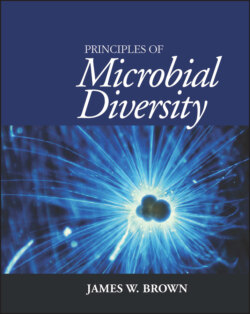Читать книгу Principles of Microbial Diversity - James W. Brown - Страница 17
Structural diversity
ОглавлениеMany bacteria have “typical” gram-positive (single membrane, thick cell wall) or gram-negative (double membrane, thin cell wall) cell envelopes. However, there is wide variation even within these two major types. Many gram-positive bacteria have an outer membrane, made of mycolic acids rather than glycerol-phosphate esters. Many gram-negative bacteria lack the lipopolysaccharide layer. Many archaea and bacteria (both gram positive and gram negative) have an orderly protein coat, the S-layer (Fig. 1.4). In bacteria, cell walls are composed of peptidoglycan, but there is a surprising range of chemical variations within this type of material. Archaea do not have peptidoglycan cell walls, although some archaeal cell walls contain a related material, pseudomurein.
Figure 1.3 The bacterium Epulopiscium fishelsoni (ca. 500 μm long) and four cells of the protist Paramecium (ca. 100 μm long). (Courtesy of Esther Angert.) doi:10.1128/9781555818517.ch1.f1.3
Microbes have a wide range of external structures: flagella, pili, fibrils, holdfasts, stalks, buds, capsules, sheaths, and so on. They also have a wide variety of internal structures such as spores, daughter cells, thylakoids, mesosomes, and the nucleoid. In reality, microbial cells are just as structurally organized, and diverse, as are eukaryotic cells.
Figure 1.4 A negative-stain electron micrograph of the S-layer of Pyrobaculum aerophilum. Scale bar, 200 nm. (Courtesy of Reinhard Rachel.) doi:10.1128/9781555818517.ch1.f1.4
